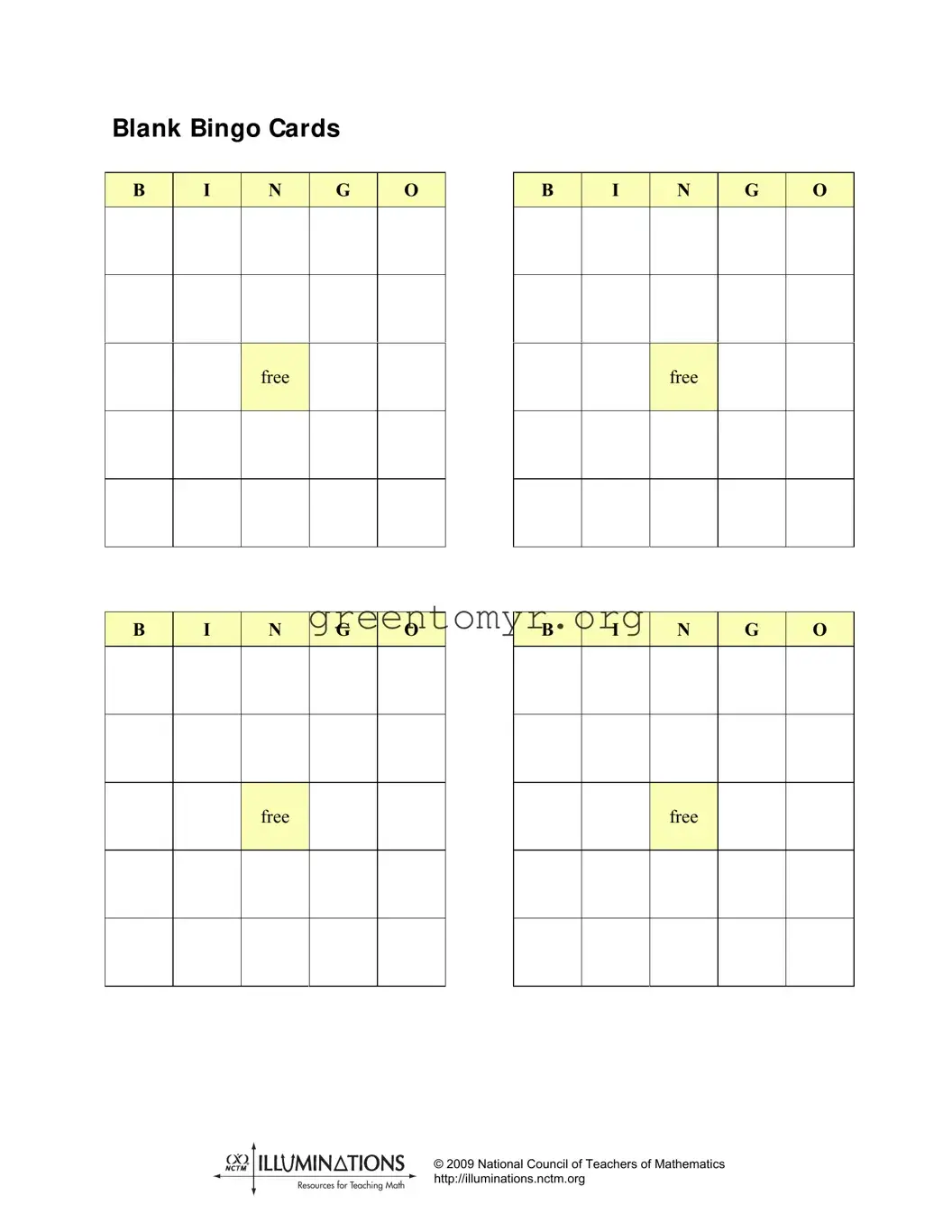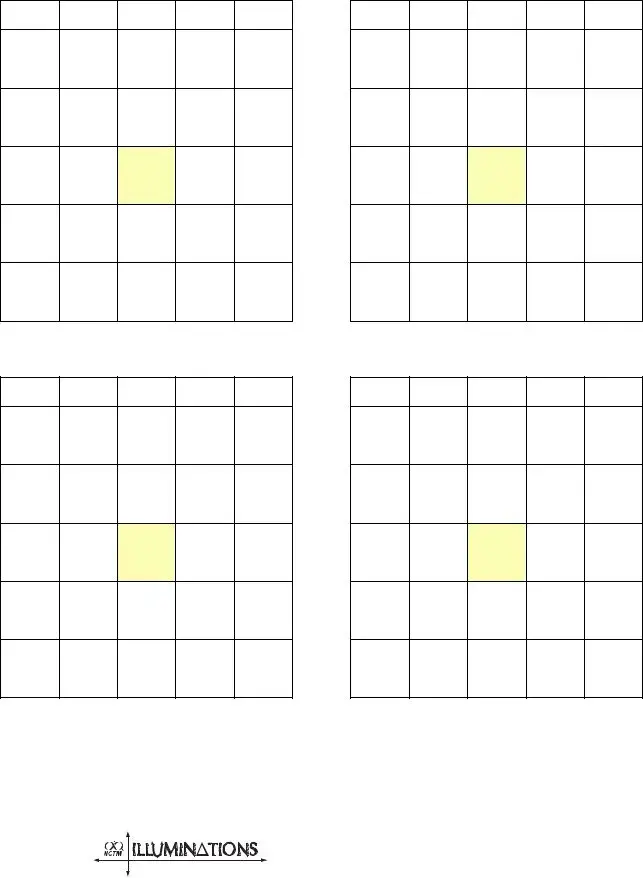The Bingo Cards form provides a set of blank Bingo cards that can be used for educational purposes, entertainment, or any event where Bingo is played. It includes the classic Bingo format with a grid labeled B-I-N-G-O.
How can I use the Bingo Cards?
You can print these Bingo cards and use them for classrooms, parties, or family gatherings. Simply fill in the Bingo card spaces with numbers or words relevant to your activity. Additionally, the Free space is included, allowing for a traditional game experience.
Are the Bingo Cards customizable?
Yes! The Bingo cards are blank, providing you the flexibility to customize them according to your specific needs. You can write numbers, letters, or words that fit your game theme directly onto the cards.
Absolutely. You are permitted to print the Bingo Cards form as many times as necessary. Just ensure that each participant has their own card to play effectively.
What should I do if I need a larger number of Bingo cards?
If you need additional Bingo cards, simply print more copies of the Bingo Cards form. You can create as many cards as required to accommodate your group size, ensuring everyone can join the game.
Is there a specific age group for using these Bingo Cards?
The Bingo Cards are suitable for all age groups. They can be adapted for educational purposes for children learning math or vocabulary, as well as for adults in social settings. The versatility makes them a great choice for any audience.
The Bingo Cards form can typically be found on educational resources websites or as part of teaching material collections. Be sure to check resources that focus on math or game-based learning for the best results.
Is there a limit to the use of the Bingo Cards in my classroom or event?
No explicit limit exists on the use of the Bingo Cards in your classroom or event. However, it's important to consider the context and the audience. Use discretion to maintain a fun and engaging experience for all participants.
The Bingo Cards form itself primarily focuses on the blank layouts for the game. However, it is provided by the National Council of Teachers of Mathematics, which indicates that it is part of a broader set of educational resources for teaching math effectively.

